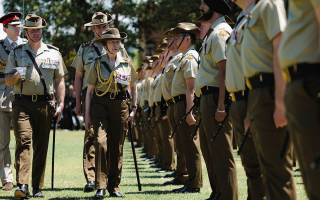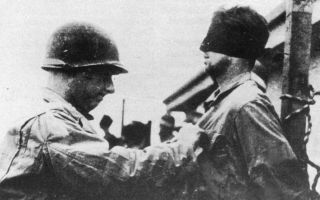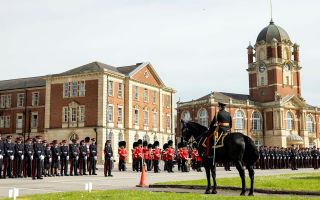HMS Queen Elizabeth sets sail from Portsmouth to test new nav and propulsion upgrades
HMS Queen Elizabeth has set sail from Portsmouth to carry out essential sea trials after being fitted with some new equipment.
The aircraft carrier, who has just come to the end of the first phase of her planned maintenance schedule, will be testing newly installed navigation and propulsion control systems.
After the tests, which will be conducted in UK waters, she will then sail to Rosyth for a scheduled period in dry dock.
The warship is currently undergoing the equivalent of a car MoT at the end of a busy six years, which included a major global deployment to the Indo-Pacific in 2021 and leading Nato operations across European waters.
The first nine months of the overhaul saw the carrier undergo engineering work in Portsmouth.
The ship's company used the time to conduct essential training to be ready for sea trials, in addition to the officers and sailors taking part in a number of development courses.

The next few months will see HMS Queen Elizabeth placed in dry dock at the Babcock Dockyard in Rosyth. This gives the maintenance teams the chance to inspect and improve systems that are inaccessible when the ship is in the water.
Captain Claire Thompson, the ship's Commanding Officer, said: "The departure of HMS Queen Elizabeth from Portsmouth marks the end of one phase of our upkeep period and the beginning of another.
"We have achieved an enormous amount in 2025, with a significant upgrade to our propulsion system being the most notable item amidst a wide range of engineering projects tackled alongside our partners from industry.
"This engineering work has happened concurrently with a rigorous training programme, to ensure my ship's company are safe to operate at sea.
"Although HMS Queen Elizabeth is now due a seven-month docking period in Rosyth after a short period of sea trials, my focus remains generating a highly capable team that can take the ship from our docking period and work towards frontline duties."
The sea trials will include Fleet Operational Standards and Training (FOST) teams coming aboard.
They will assess the ability of the 500-strong ship's company to deal with a range of on-board emergencies such as damage control and fire and floods training.

Last year, the 65,000-tonne aircraft carrier spent several months undergoing repair work at Rosyth Dockyard.
HMS Queen Elizabeth's starboard propeller shaft needed to be fixed after a malfunction prevented her from taking part in Exercise Steadfast Defender.
Her sister ship, HMS Prince of Wales, the Royal Navy's current flagship, is currently deployed on Carrier Strike Group 25.
She is taking part in the Australian-led multinational multi-domain Exercise Talisman Sabre.








